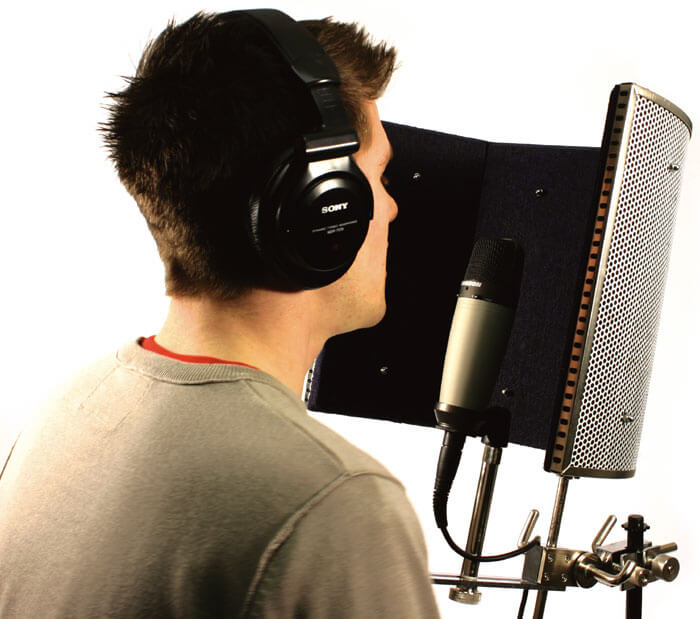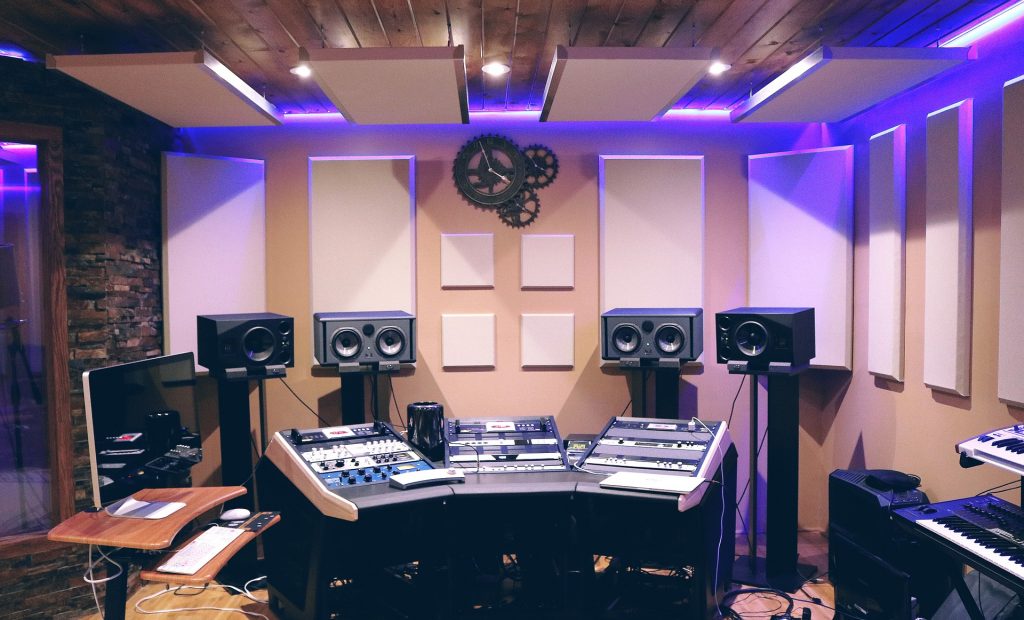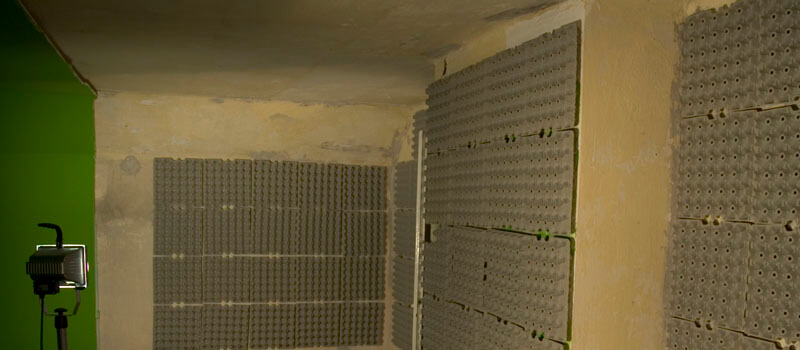Ah the closet booth. I have such fond memories of setting up a “recording booth” in my bedroom’s tiny closet as a teenager that it warms my heart a little. I did everything I could to get rid of the echo-y noise I would hear in my recordings, later I found out that echo-y noise was called reverb.
I would put big comforters along the top shelve so that the ceiling’s reflections would be dampened, I would put blankets over my clothes so I wouldn’t spit on them.
One time I even recorded with a thick blanket draped over my head and the mic. Let’s just I had to stop when I couldn’t breathe!
I’ve literally tried every configuration of blanket placement and did a whole bunch of tests as a kid to get the optimal vocal recordings. And what I painfully found out much later in life is that you don’t need all that shit.
This isn’t a pic of me (I would never dress this bad) but it’s pretty much how I used to record.
The problem with “padding” your closet with whatever you can find is that you are going to affect the reverb times.
Many people think they need to “pad” their entire closet so that there’s no reverb, the problem with this is that it creates a sort of dead room.
It’s very difficult to hear yourself in a dead room and not an optimal place to record in. The reason is because you’ve essentially killed all the reverb in the closet, you are not going to be getting any feedback on how well you’re singing or rapping.
This is because the sound waves coming out of your mouth are being absorbed into whatever it is you’ve tacked up to the wall and barely nothing is bouncing back into your ear. It’s similar to when you walk into a movie theater and you notice your ears feel stuffy because you’re getting very little auditory feedback.
Another issue with the closet is that even if you do half-pad it, so that the closet isn’t dead, the reverb times will be very short as the distance between you and the walls and ceiling is very close. So the sound is coming out of your mouth and bouncing off the wall and back into the microphone.
I can identify closet recordings or recordings done in tight spaces easily by hearing the reverb times. In small spaces, it’s that annoying harsh reflection sound that sounds like metal pings. If you want to hear it just go about a foot away from your drywall and start singing or rapping and listen closely. Sounds ugly.
Here is the solution my friend.
Record Better Vocals With This Proven Technique
What you want is a room where the reverb is controlled, not dead.
I previously did a post on 5 tips to help record good vocals, but I’ll elaborate on the first point “Cut out room reverb”.
Specifically, what I’ve found best is using a mic shield and placing your microphone in the center of the room.
If you have hardwood floors, you’ll want to get a thick rug and lay it down under the mic stand to catch any of the floor reflections.
If you have carpeted floors that’s probably ideal.
The next thing you’ll want to do, if your budget permits, is hang some acoustic panels.
The first acoustic panels I ever used I actually made myself out of some Owens Corning 703 fiber glass, 2x4s and burlap (and yes were hideous).
Obviously the reason I made them back then was to save money, in retrospect it is probably a better idea to save up and buy some nice looking ones.
The ones in my studio cost about $80 each and work perfectly (and look beautiful).
I personally recommend getting ones that are 2 feet in width and 4 feet in length and that are between 3 and 4 inches thick.
Depending on the size of your room, and let’s face it most home studio’s will have the smallest room, they do wonders to absorb reverb.
If you have a small rectangular size room, you’ll need about 4-8 panels (2 on each wall).
Depending on your room, you can even get away with less acoustic panels.
For example, if you have a couch or bed behind your mic, you can get away with not putting panels on one of your walls.
In fact, it may even help if the room is sounding too dead.
If you want to even take it further, you can place bass traps in the corners of your room along the top corners, this will not only help with mixing but also recording as a lot of reverb and flutter echo bounces off the top corners of a room.
Before I end this I feel I should say something about the old egg cartoon on the wall myth.
First of all they look ugly.
But it’s your music, if you want to be surrounded by ugly egg cartoons (you’ve collected for years) while you record, more power to you.
Maybe you’re recording a song about chickens laying eggs.
Secondly and most importantly they wont work anywhere as well as acoustic panels. Sure they’ll help absorb a tiny amount of reverb but so will a blanket draped over your head (and we saw how that worked out for me).
More importantly, how is recycled paper pulp going to absorb sound?
Also you have to think about the sound that will be made once it bounces of the egg cartoons and into your mic.
Is that the sound you want? Hell nah.
Want your music to sound better? Here is the secret to high-quality professional music.







Hello, I was educating myself on you guys blog. I hear you guys are the best at mixing and mastering. What is your pricing for mixing & mastering?
Hey Jerrmal, you can see our mixing and mastering services.
I dont have a whole room to work with and a closet is my best option what should I do
Hey do you guys have any advice for starting to become a rapper?
Yeah check this http://www.adgmastering.com/forget-getting-a-big-record-deal/
If I use the isolation shield in the closet would the help or nah?